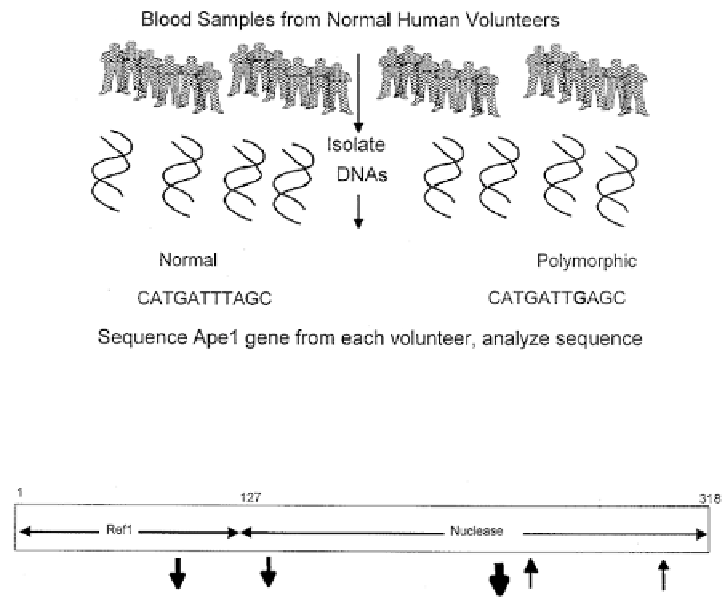Environmental Engineering Reference
In-Depth Information
groups at Lawrence Livermore National Laboratory took advantage of high throughput
DNA sequencing with the knowledge base of Ape1 structure and function to look for
sequence changes (polymorphisms) among normal humans in the sequence of their
Ape1 genes (see Figure 18).
Figure 18. Scheme for determining DNA sequence polymorphisms in Ape1 gene in human volunteers.
They sequenced the Ape1 gene from over 128 normal, unrelated people, and detected
sequence changes in the repair domain of this gene from DNA in seven individuals.
Figure 19. Human Ape1 gene, showing the Ref1 and nuclease domains, and locations of polymorphisms.
Of these mutations, Ape1 activity was decreased in 3 (shown as bold, downward-
pointing arrows), of those, one was very strongly reduced (heavy bold, down-pointing
arrow), increased in 2 (dotted, upward-pointing arrow) and unaffected in 2 (not shown).
These mutations may affect human health, including cancer proneness.
9. Conclusions
Alterations of the structural genes coding for DNA repair enzymes can have severe
effects on the organisms, whether a simple bacterium, or a higher plant or person.
Modern biochemical and molecular biological approaches allow determination of the
molecular origin of radiation sensitivity, including those resulting from deficiencies in
DNA repair.

Search WWH ::

Custom Search